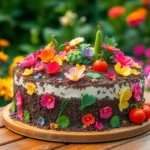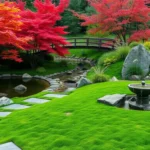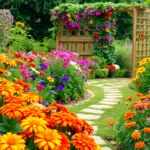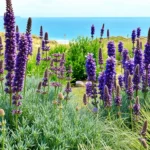We’ve all been there – staring at empty containers wondering how to transform them into stunning miniature landscapes. Dish gardens offer the perfect solution for creating captivating indoor displays that bring nature’s beauty into our homes without requiring extensive space or gardening expertise.
These versatile container gardens let us combine succulents, air plants and small flowering specimens in creative arrangements that serve as living art pieces. Whether we’re working with vintage teacups, glass bowls or ceramic planters, dish gardens provide endless opportunities to express our personal style while enjoying the therapeutic benefits of gardening.
From modern minimalist designs featuring sleek succulents to whimsical fairy garden themes complete with tiny accessories, we’ll explore innovative approaches that’ll inspire your next green creation. Ready to discover how simple containers can become extraordinary focal points that elevate any room’s aesthetic?
Create a Desert Oasis With Succulent Dish Gardens
Succulent dish gardens bring the serene beauty of desert landscapes into our homes with minimal maintenance requirements. These low water gardens thrive in bright indoor spaces and offer endless creative possibilities for arrangement.
Choose Drought-Tolerant Varieties
Selecting the right succulents ensures our desert dish gardens flourish with minimal care. We recommend starting with hardy varieties like jade plants, echeveria, and sedum that adapt well to container environments. Haworthia species work exceptionally well in dish gardens because they stay compact and tolerate lower light conditions than most desert plants.
Mixing different textures creates visual interest in our arrangements. We can combine spiky varieties like small aloe plants with rosette shaped echeveria and trailing string of pearls for ever-changing compositions. Popular beginner friendly options include hen and chicks, zebra plants, and panda plants that require watering only every 2-3 weeks.
Layer Sand and Gravel for Drainage
Proper drainage prevents root rot and keeps our succulent dish gardens healthy long term. We start with a 1-2 inch layer of coarse gravel or small stones at the bottom of containers without drainage holes. This foundation layer allows excess water to collect away from plant roots.
Adding activated charcoal above the gravel layer helps filter water and prevents odors in closed containers. We then apply a thin layer of industry fabric or coffee filter to separate drainage materials from soil. The final soil layer should be a well draining cactus mix that we can purchase or create by mixing regular potting soil with perlite and coarse sand.
Add Decorative Rocks and Miniature Cacti
Decorative elements transform functional dish gardens into stunning desert landscapes. We use colored sand, polished stones, and small pieces of driftwood to create realistic desert scenes. River rocks in various sizes work perfectly as mulch while adding natural texture around our succulent plantings.
Miniature cacti serve as focal points in our desert themed arrangements. Small barrel cacti, pincushion cacti, and golden ball cacti stay compact and provide interesting shapes alongside our succulents. We position these spiky specimens carefully to avoid overcrowding and ensure each plant receives adequate light exposure.
Design a Fairy Tale Miniature Garden Scene

Transform your dish garden into an enchanting industry where tiny plants and whimsical decorations create magical landscapes that spark imagination and wonder.
Select Tiny Flowering Plants
Succulents offer the perfect foundation for fairy tale dish gardens due to their manageable size and diverse textures. Echeveria varieties provide rosette formations that resemble miniature flowers, while Sedum species add cascading elements with their trailing growth patterns. Aloe plants contribute architectural interest with their pointed leaves and compact growth habits.
Mosses create lush carpet effects that serve as perfect backdrops for your miniature scenes. These low maintenance plants establish natural looking ground cover that requires minimal watering. Ferns add delicate fronds that mimic tiny forest settings, bringing vertical dimension to your fairy tale industry.
Small flowering plants introduce seasonal color throughout the year when selected carefully. Choose varieties that remain compact and won’t outgrow your container space. Mix different plant heights to create natural looking layers that guide the eye through your miniature industry.
Include Miniature Figurines and Accessories
Tiny houses establish focal points that anchor your fairy tale theme and provide storytelling elements. Bridges create connections between different areas of your dish garden while adding architectural interest. These structures should complement your plant selections without overwhelming the natural elements.
Fairies and other figurines bring personality to your miniature industry and help establish the magical theme. Choose weatherproof materials that can withstand humidity from plant watering. Position these characters strategically to create scenes and interactions within your garden space.
Small ponds or fountains add water features when feasible for your container size and setup. These elements introduce movement and sound that enhance the magical atmosphere. Consider battery operated options that don’t require electrical connections for indoor displays.
Create Pathways With Small Pebbles
Small pebbles form natural looking walkways that guide visitors through your miniature industry. These stone pathways add depth and visual interest while creating clear navigation routes between different garden areas. Choose pebbles that complement your overall color scheme and plant selections.
Cobblestone paths provide structured elements that contrast beautifully with organic plant forms. These defined walkways help organize your space and create intentional viewing angles. Select stones that remain proportional to your container size and plant scale.
Small shells offer beachy alternatives for coastal themed fairy gardens that evoke seaside magic. These natural materials add texture variety while maintaining the organic feel of your display. Mix different shell sizes to create interesting pathway patterns that lead to key focal points.
Build a Tropical Paradise in a Shallow Container

We can transform any shallow container into a stunning tropical oasis that captures the lush beauty of rainforest environments. Creating these miniature paradises allows us to enjoy exotic landscapes year-round from the comfort of our homes.
Plant Colorful Bromeliads and Air Plants
Bromeliads serve as the perfect centerpiece for our tropical dish gardens with their vibrant colors and long-lasting blooms that can persist for months. These striking plants feature rosettes of colorful leaves in shades of red, orange, pink, and yellow that add instant drama to any arrangement.
Air plants offer incredible versatility since they’re epiphytes that thrive without soil, allowing us to position them creatively throughout our tropical display. We can attach Tillandsia varieties to driftwood pieces, nestle them between rocks, or suspend them from container edges to create layered visual interest.
Combining both plant types creates ever-changing contrasts in our tropical paradise, with bromeliads providing bold color statements while air plants contribute delicate, sculptural forms. These plants naturally complement each other since they both prefer bright, indirect light and moderate humidity levels.
Add Moss for Lush Ground Cover
Moss creates an essential foundation layer that transforms bare soil into a carpet resembling tropical forest floors. We can spread various moss types across the container surface to establish that authentic rainforest atmosphere while requiring minimal maintenance effort.
Sheet moss works particularly well for covering large areas quickly, while cushion moss adds textural variety with its rounded, pillow-like growth pattern. These ground covers thrive in the low-light conditions often found in dish garden settings and help retain moisture around our tropical plants.
Live moss species continue growing within our containers, creating an ever-evolving industry that becomes more lush over time. We should mist the moss lightly to maintain its vibrant green color and soft texture that mimics natural tropical environments.
Incorporate Natural Driftwood Elements
Driftwood pieces add authentic tropical character while serving multiple functional purposes in our dish garden designs. We can use weathered wood as natural plant supports, creating elevated growing platforms that showcase our bromeliads and air plants at different heights.
These organic elements provide mounting surfaces for epiphytic plants, allowing us to recreate the natural growing conditions found in tropical forests where plants cling to tree branches. Driftwood’s unique shapes and textures add visual depth that makes our miniature landscapes appear more mature and established.
Selecting pieces with interesting curves and natural hollows gives us creative opportunities to tuck small plants into crevices or create focal points within our tropical arrangements. The aged appearance of driftwood instantly adds character that would take years to develop naturally in our dish gardens.
Craft a Zen-Inspired Asian Garden Display

Asian-inspired dish gardens bring tranquil elements into your space through carefully selected plants and decorative features. We’ll explore how to create these peaceful arrangements that embody balance and natural harmony.
Feature Bonsai Trees and Bamboo
Bonsai trees serve as stunning centerpieces for Asian-themed dish gardens, creating an instant focal point that captures the essence of traditional Japanese aesthetics. We recommend positioning a small bonsai tree at the center of your container, allowing its graceful branches to establish the garden’s visual hierarchy. Bamboo shoots complement the bonsai beautifully, adding vertical interest and authentic Asian character to your display.
Select dwarf varieties of bonsai like juniper or ficus that thrive in shallow containers and require minimal root space. Bamboo shoots provide texture contrast against the bonsai’s refined silhouette while maintaining the garden’s serene atmosphere. Position bamboo strategically around the bonsai to create natural framing without overwhelming the primary focal point.
Create Balance With Smooth River Stones
Smooth river stones establish visual harmony throughout your Zen garden by providing grounding elements that connect all components together. We place these stones strategically around plants to create a sense of balance that’s fundamental to Asian garden design principles. Each stone placement should feel intentional yet natural, mimicking how rocks naturally settle in riverbeds.
Arrange larger stones near the base of your bonsai tree to anchor the composition, then scatter smaller stones throughout the remaining space. Vary the stone sizes and colors subtly to add depth without disrupting the peaceful aesthetic. These stones also serve practical purposes by helping retain moisture and preventing soil erosion during watering.
Add a Small Water Feature Element
Water features enhance the Zen ambiance by introducing gentle sounds and visual movement that promote relaxation and meditation. We incorporate tiny fountains or shallow water dishes to create this essential sensory element in our dish gardens. Small water features work particularly well when positioned near the garden’s edge where they won’t overshadow the plant arrangements.
Choose miniature fountains with subtle water flow that creates soft trickling sounds without being disruptive. Shallow dishes filled with water provide reflection surfaces that add visual depth and create the illusion of larger space within your container. Position water elements where they’ll catch natural light to enhance their reflective qualities and create gentle sparkles throughout the day.
Establish a Mediterranean Herb Garden Collection

Transform your space into a fragrant Mediterranean paradise with carefully selected herbs and traditional containers. Mediterranean dish gardens capture the essence of sun-drenched coastal regions while providing fresh herbs for your culinary adventures.
Plant Aromatic Herbs Like Rosemary and Thyme
Select drought-tolerant herbs that naturally thrive in hot, dry Mediterranean conditions. Rosemary, thyme, sage, oregano, and basil form the foundation of authentic Mediterranean herb collections, requiring minimal water while delivering maximum fragrance and flavor.
Arrange plants strategically by placing taller herbs like rosemary in the back, positioning mid-sized varieties such as oregano and thyme in the middle, and featuring sprawling or low-growing herbs at the front. This layering technique ensures optimal sun exposure for all plants while creating visual depth in your dish garden.
Choose sun-loving varieties that flourish in bright, direct sunlight for 6-8 hours daily. These Mediterranean herbs have adapted to intense sunlight and actually develop stronger flavors when grown in full sun conditions, making them perfect companions for outdoor patio displays.
Use Terra Cotta Containers for Authenticity
Embrace traditional terra cotta pots that allow excess moisture to evaporate naturally through their porous walls. Terra cotta containers closely mimic the traditional planting vessels used throughout Mediterranean regions, providing both authentic aesthetics and functional drainage benefits.
Avoid plastic containers completely, as they retain moisture and can cause root rot in plants accustomed to well-drained, rocky Mediterranean soils. The breathable nature of terra cotta helps recreate the dry conditions these herbs prefer in their native habitats.
Create proper drainage using a specialized soil mix combining two parts regular potting soil, one part coarse sand or fine gravel, and one part perlite. This mixture replicates the poor, rocky soils Mediterranean herbs naturally prefer while preventing the overwatering issues that commonly harm these plants.
Add warm-toned stones or gravel as mulch to enhance the Mediterranean appearance while helping maintain proper soil conditions. These decorative elements provide both visual appeal and functional benefits by reflecting heat and preventing moisture retention around plant stems.
Include Olive Tree Saplings as Focal Points
Position olive tree saplings as stunning centerpieces that serve as natural focal points due to their distinctive silvery foliage and hardy Mediterranean character. Olive trees adapt exceptionally well to container growth when provided with plenty of bright light and protection from freezing temperatures.
Combine aromatic herbs with olive saplings to create authentic Mediterranean garden atmospheres that transport viewers to sun-soaked coastal hillsides. The contrasting textures between herb foliage and olive tree leaves add visual interest while maintaining botanical authenticity.
Ensure adequate lighting for olive trees, which require abundant sunlight to thrive in container environments. These saplings tolerate hot, dry conditions exceptionally well, making them ideal companions for Mediterranean herb collections in both indoor and outdoor settings.
Protect from frost during winter months if you live in colder climates, as olive trees can suffer damage from freezing temperatures. Moving containers to protected areas or providing winter shelter ensures your Mediterranean focal points survive to flourish in subsequent growing seasons.
Develop a Woodland Forest Floor Scene

Creating woodland dish gardens brings the serene atmosphere of forest floors into our homes. These natural displays capture the essence of shaded woodlands where moss carpets the ground and ferns unfurl in gentle layers.
Layer Different Types of Moss and Ferns
Mosses form the foundation of authentic woodland scenes through their varied textures and growth patterns. We recommend combining cushion moss, sheet moss, and haircap moss to create realistic depth variations across the container surface. Each moss variety contributes unique characteristics that mirror natural forest environments.
Ferns add vertical dimension and lush greenery to complement the moss base layers. Kimberly Queen Ferns provide excellent structure with their upright fronds and tolerance for indoor conditions. Small specimens of maidenhair ferns or button ferns work beautifully in confined spaces while maintaining the woodland aesthetic.
Strategic placement creates visual interest by positioning taller ferns toward the back and shorter moss varieties in front. This layering technique mimics how plants naturally arrange themselves in forest ecosystems where light filters through canopy layers.
Add Fallen Branches and Natural Debris
Fallen branches simulate authentic forest floor conditions where natural debris accumulates over time. We select small twigs and branch pieces that fit proportionally within our dish garden containers. These elements add realistic texture while providing climbing surfaces for moss growth.
Lichen covered branches enhance the whimsical atmosphere and create natural transitions between different plant zones. The silvery green colors of lichen blend seamlessly with moss varieties while adding delicate details that catch the eye.
Natural debris placement requires careful consideration to avoid overwhelming the living plants in our woodland scenes. We position branches to create pathways and visual anchors without blocking light from reaching the moss and fern specimens.
Include Shade-Loving Plants Like Violets
Violets bring delicate flowering elements to woodland dish gardens through their heart shaped leaves and occasional purple blooms. These shade tolerant plants thrive in the same conditions that support moss and fern growth.
Wildflower varieties add seasonal color changes to our forest floor displays throughout different times of year. Small specimens of woodland strawberry, wild ginger, or trillium create authentic undergrowth appearances when space permits.
Plant selection focuses on low light tolerance since woodland gardens recreate shaded forest conditions. We choose species that naturally grow in forest understories where direct sunlight rarely penetrates the canopy above.
Construct a Modern Geometric Garden Design

Modern geometric dish gardens bring architectural precision to our indoor spaces while maintaining the natural beauty we love in miniature landscapes. These contemporary designs emphasize structure and symmetry to create striking visual displays.
Arrange Plants in Clean Linear Patterns
Straight line arrangements create the foundation of modern geometric dish gardens by establishing clear visual boundaries and architectural appeal. We position structural plants like columnar cacti and spherical succulents in precise rows or geometric patterns that emphasize the contemporary aesthetic. Triangular formations work particularly well when we place three identical plants at equal distances from each other.
Pattern repetition strengthens the geometric impact by creating rhythm and visual harmony throughout our design. We select plants with similar heights and shapes, then arrange them in repeating sequences that guide the eye across the container. Square formations using four matching plants create perfect symmetry, while pentagon arrangements offer more ever-changing visual interest.
Spacing consistency ensures our geometric patterns remain crisp and intentional rather than appearing randomly placed. We measure equal distances between each plant to maintain the structured appearance that defines modern design. This precise spacing also allows each plant adequate room to grow while preserving the geometric integrity of our arrangement.
Use Contemporary Containers and Materials
Shallow ceramic planters supported by metal frames provide the perfect foundation for modern geometric dish gardens while adding versatility to our display options. These contemporary containers can be mounted on walls or positioned on surfaces, allowing us to create vertical gardens that maximize space efficiency. The clean lines of ceramic paired with metal framework enhance the architectural quality of our designs.
Drainage materials like small rocks and pebbles serve dual purposes by preventing waterlogging while contributing to the modern aesthetic. We layer these materials beneath our soil to ensure proper plant health and create visible texture contrasts. The geometric shapes of carefully selected stones complement our overall design theme.
Top dressing elements such as Spanish moss or decorative pebbles provide the finishing touches that elevate our geometric gardens from simple plantings to sophisticated displays. We choose materials that reinforce our linear patterns while adding visual interest through texture and color contrasts. These finishing elements also help retain soil moisture and create clean boundaries between different sections of our design.
Focus on Architectural Plant Shapes
Columnar cacti serve as natural architectural elements that emphasize vertical lines and create striking focal points in our geometric arrangements. We position these tall, narrow plants at strategic corners or center points to establish the structural foundation of our design. Their naturally geometric forms require minimal maintenance while providing year round visual impact.
Spherical succulents offer perfect circular shapes that contrast beautifully with angular containers and linear arrangements. We select varieties with compact, rounded growth habits that maintain their geometric form without frequent pruning. These plants work exceptionally well when arranged in groups of odd numbers to create balanced compositions.
Bright indirect sunlight provides the ideal growing conditions for most architectural plants while preventing the scorching that can damage their structured forms. We position our modern geometric gardens near east or west facing windows where they’ll receive consistent light without harsh direct rays. This lighting ensures our carefully selected plants maintain their precise shapes and healthy appearance throughout the growing season.
Assemble a Seasonal Holiday-Themed Display

Creating seasonal displays transforms ordinary dish gardens into festive centerpieces that celebrate each time of year. We’ll explore how to adapt your arrangements throughout the seasons for maximum visual impact.
Rotate Plants Based on Current Season
Rotating plants keeps our dish gardens fresh and seasonally appropriate throughout the year. During spring and summer months, we plant flowers and herbs that thrive in warmer weather conditions. Tulips and daffodils create vibrant spring displays that welcome the growing season with their bold colors.
Summer arrangements benefit from incorporating succulents or cacti for desert themed gardens that excel in sunny spots. These drought tolerant varieties require minimal maintenance while providing stunning architectural forms.
Fall and winter transitions call for completely different plant selections that tolerate cooler temperatures. We switch to plants like Hellebores, Erica Heather, and Primrose during late winter months to add essential color during dormant seasons. Asters and chrysanthemums work beautifully for autumn themed arrangements, complementing the season’s natural palette.
Add Festive Decorations and Colors
Festive decorations transform basic plant arrangements into holiday celebrations that capture seasonal spirit. We incorporate decorative stones, shells, and small ornaments to add texture and visual interest throughout our displays. Seasonal color schemes create immediate recognition of exact holidays and celebrations.
Red and green combinations work perfectly for Christmas themed arrangements, while orange and yellow tones celebrate Halloween festivities. Colored sand layers provide striking backgrounds that highlight our chosen plants while maintaining the seasonal theme.
Small figurines and miniature accessories extend our creative possibilities beyond traditional plant materials. These decorative elements tell stories within our arrangements while maintaining proper scale relationships with our selected plants.
Include Weather-Appropriate Plant Varieties
Weather appropriate plant selection ensures our seasonal displays thrive in their intended environments. Indoor gardens use houseplants that flourish in controlled indoor conditions year round, requiring consistent temperature and humidity levels.
Outdoor seasonal displays demand plants suitable for current weather conditions and temperature fluctuations. We choose hardy varieties that withstand seasonal storms, temperature swings, and varying moisture levels throughout their display period.
Low light tolerant plants become essential during winter months when natural sunlight decreases significantly. These varieties maintain their appearance and health even though reduced growing conditions that challenge most flowering plants.
Cold hardy selections like winter flowering varieties extend our seasonal display options into months traditionally considered dormant periods. These specialized plants provide color and interest when most garden plants enter winter dormancy.
Conclusion
We’ve explored countless ways to transform simple containers into captivating miniature worlds that reflect your unique style and creativity. From desert-inspired succulent arrangements to enchanting fairy tale scenes these versatile displays offer endless possibilities for personal expression.
The beauty of dish gardens lies in their adaptability – whether you’re drawn to the structured elegance of geometric designs or the wild charm of woodland scenes there’s a perfect style waiting for you. Each approach we’ve covered requires minimal space while delivering maximum visual impact.
Start with one design that speaks to you and watch as your confidence grows. These living artworks will bring joy to your home while showcasing your gardening skills in the most delightful way possible.
Frequently Asked Questions
What is a dish garden?
A dish garden is a creative indoor display that transforms empty containers into beautiful miniature landscapes. These versatile container gardens can incorporate succulents, air plants, and small flowering plants, making them accessible for anyone regardless of gardening experience. They offer opportunities for personal expression through various container styles and design themes.
What plants work best for succulent dish gardens?
Hardy, drought-tolerant varieties work best for succulent dish gardens. Recommended plants include jade plants, echeveria, and sedum. Mix different textures for visual interest and ensure proper drainage by layering gravel and activated charcoal to prevent root rot. Add decorative elements like colored sand and polished stones for enhanced appeal.
How do I create a fairy tale miniature garden?
Use small flowering plants, mosses, and ferns to create lush, layered landscapes. Include miniature figurines, tiny houses, and water features to add storytelling elements and magical atmosphere. Create pathways using small pebbles or shells to guide visitors through the enchanting display while providing structure and visual interest.
What plants are ideal for tropical dish gardens?
Colorful bromeliads make excellent centerpieces due to their vibrant colors and long-lasting blooms. Air plants thrive without soil and offer creative positioning options. Combine these with moss as ground cover to mimic tropical forest floors. Incorporate natural driftwood elements for authentic tropical character and visual depth.
How do I design a Zen-inspired Asian garden display?
Use bonsai trees as stunning centerpieces, complemented by bamboo shoots for vertical interest. Achieve balance through strategic placement of smooth river stones that connect all components. Incorporate small water features like miniature fountains or shallow dishes to introduce gentle sounds and promote relaxation and meditation.
What herbs work well in Mediterranean dish gardens?
Plant drought-tolerant herbs like rosemary, thyme, sage, oregano, and basil. Arrange them strategically for optimal sun exposure in traditional terra cotta containers for better drainage. Use specialized soil mix to replicate rocky Mediterranean soils. Consider olive tree saplings as stunning focal points that enhance the Mediterranean atmosphere.
How do I create a woodland dish garden?
Layer different types of moss and ferns to mimic natural forest ecosystems. Use varieties like cushion moss and Kimberly Queen ferns. Add fallen branches and natural debris for authenticity. Include shade-loving plants like violets and wildflowers to bring seasonal color and texture to the forest floor display.
What defines a modern geometric dish garden?
Modern geometric dish gardens emphasize architectural precision and symmetry. Arrange plants in clean linear patterns using structural plants like columnar cacti and spherical succulents. Maintain spacing consistency and pattern repetition for a crisp, intentional look. Use contemporary containers like shallow ceramic planters with metal frames for aesthetic appeal.
How do I create seasonal holiday-themed displays?
Rotate plants based on current seasons – use flowers and herbs for spring/summer, cooler-tolerant plants for fall/winter. Add festive decorations and seasonal color schemes to enhance holiday spirit. Choose weather-appropriate plant varieties, including low-light tolerant plants for winter and cold-hardy selections for extended seasonal displays.
What containers work best for dish gardens?
Various containers work well for dish gardens, from vintage teacups and glass bowls to traditional terra cotta pots and contemporary ceramic planters. Choose containers based on your design theme – shallow containers for tropical gardens, terra cotta for Mediterranean herbs, and geometric containers for modern designs. Ensure proper drainage regardless of container choice.







